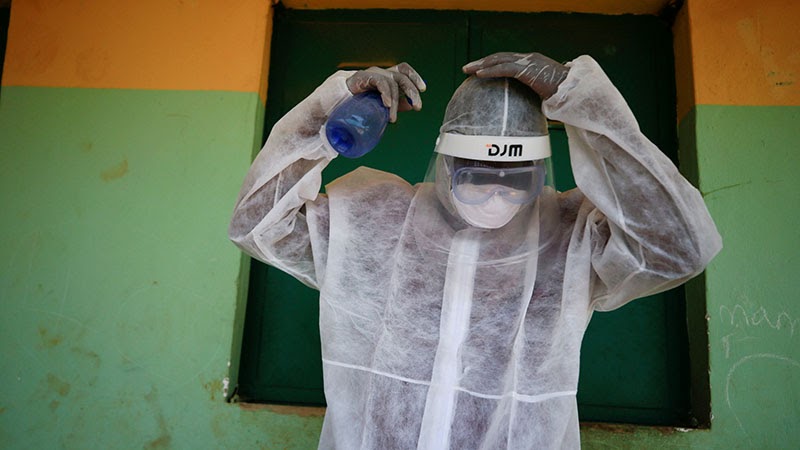A health worker sprays his headset during a community testing exercise, as authorities race to contain the spread of the coronavirus disease (COVID-19) in Abuja, Nigeria April 16, 2020. REUTERS/Afolabi Sotunde
Scientists have warned that healthcare workers stand a risk of being infected with coronavirus from their uniforms.
The study conducted by De Montfort University in Leicester, UK, tested a virus similar to the coronavirus strain that causes COVID-19 on polyester, polycotton and 100 percent cotton.
The scientists then monitored the stability of the virus on each material for 72 hours.
The result showed that the virus can survive on commonly-worn fabrics for up to three days.
Advertisement
According to the researchers, polyester posed the highest transmission risk, with the virus still present after three days and an ability to transfer to other surfaces. The virus lasted for 24 hours on 100 percent cotton and six hours on polycotton.
Katie Laird, who led the study, advised against healthcare workers taking their uniforms home for laundry.
She recommended that all healthcare uniforms should be washed on-site at hospitals or at an industrial laundry.
Advertisement
“When the pandemic first started, there was very little understanding of how long coronavirus could survive on textiles,” Laird said.
“Our findings show three of the most commonly-used textiles in healthcare pose a risk for transmission of the virus.
“If nurses and healthcare workers take their uniforms home, they could be leaving traces of the virus on other surfaces.
“This research has reinforced my recommendation that all healthcare uniforms should be washed on site at hospitals or at an industrial laundry.
Advertisement
“These wash methods are regulated and nurses and healthcare workers do not have to worry about potentially taking the virus home.”
Earlier studies showed that COVID-19 can remain infectious on surfaces such as banknotes, phone screens and stainless steel for as long as 28 days.
Add a comment







